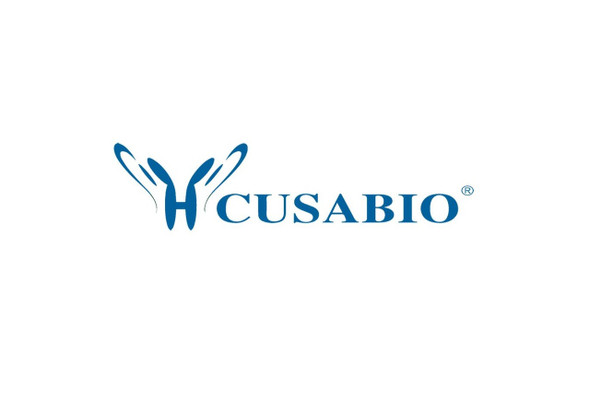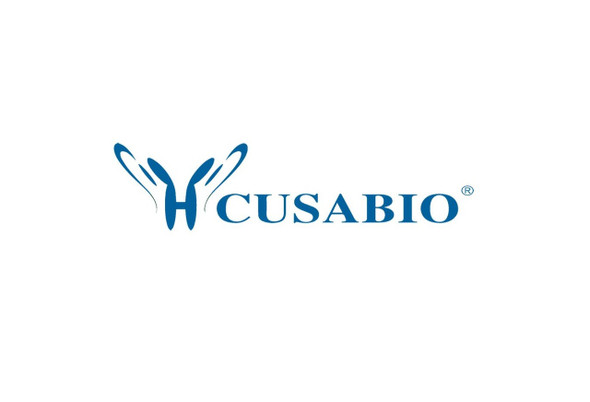Cusabio Human Recombinants
Recombinant Human CUE domain-containing protein 2 (CUEDC2), partial | CSB-EP884464HU
- SKU:
- CSB-EP884464HU
- Availability:
- 13 - 23 Working Days
Description
Recombinant Human CUE domain-containing protein 2 (CUEDC2), partial | CSB-EP884464HU | Cusabio
Alternative Name(s): bA18I14.5; C10orf66; Chromosome 10 open reading frame 66 ; CUE domain containing 2; CUE domain-containing protein 2; CUED2; CUED2_HUMAN; Cuedc2; MGC2491; OTTHUMP00000020368
Gene Names: CUEDC2
Research Areas: Epigenetics and Nuclear Signaling
Organism: Homo sapiens (Human)
AA Sequence: MELERIVSAALLAFVQTHLPEADLSGLDEVIFSYVLGVLEDLGPSGPSEENFDMEAFTEMMEAYVPGFAHIPRGTIGDMMQKLSGQLSDARNKENLQPQSSGVQGQVPISPEPLQRPEMLKEETRSSAAAAADTQDEATGAEEELLPGVDVLLEVFPTCSVEQAQWVLAKARGDLEEAVQMLVEGKEEGPAAWEGPNQDLPRRLRGPQKDELKSFILQKYMMVDSA
Source: E.coli
Tag Info: N-terminal 6xHis-SUMO-tagged
Expression Region: 1-226aa
Sequence Info: Partial
MW: 40.7 kDa
Purity: Greater than 90% as determined by SDS-PAGE.
Relevance: Down-regulates ESR1 protein levels through the ubiquitination-proteasome pathway, regardless of the presence of 17 beta-estradiol. Also involved in 17 beta-estradiol-induced ESR1 degradation. Controls PGR protein levels through a similar mechanism.
Reference: Molecular cloning of an osteocyte derived gene.Ikeda A., Turitani K. Nucleotide sequence of human CUEDC2 mRNA.Matsumoto K., Abiko S., Ariga H. The DNA sequence and comparative analysis of human chromosome 10.Deloukas P., Earthrowl M.E., Grafham D.V., Rubenfield M., French L., Steward C.A., Sims S.K., Jones M.C., Searle S., Scott C., Howe K., Hunt S.E., Andrews T.D., Gilbert J.G.R., Swarbreck D., Ashurst J.L., Taylor A., Battles J. , Bird C.P., Ainscough R., Almeida J.P., Ashwell R.I.S., Ambrose K.D., Babbage A.K., Bagguley C.L., Bailey J., Banerjee R., Bates K., Beasley H., Bray-Allen S., Brown A.J., Brown J.Y., Burford D.C., Burrill W., Burton J., Cahill P., Camire D., Carter N.P., Chapman J.C., Clark S.Y., Clarke G., Clee C.M., Clegg S., Corby N., Coulson A., Dhami P., Dutta I., Dunn M., Faulkner L., Frankish A., Frankland J.A., Garner P., Garnett J., Gribble S., Griffiths C., Grocock R., Gustafson E., Hammond S., Harley J.L., Hart E., Heath P.D., Ho T.P., Hopkins B., Horne J., Howden P.J., Huckle E., Hynds C., Johnson C., Johnson D., Kana A., Kay M., Kimberley A.M., Kershaw J.K., Kokkinaki M., Laird G.K., Lawlor S., Lee H.M., Leongamornlert D.A., Laird G., Lloyd C., Lloyd D.M., Loveland J., Lovell J., McLaren S., McLay K.E., McMurray A., Mashreghi-Mohammadi M., Matthews L., Milne S., Nickerson T., Nguyen M., Overton-Larty E., Palmer S.A., Pearce A.V., Peck A.I., Pelan S., Phillimore B., Porter K., Rice C.M., Rogosin A., Ross M.T., Sarafidou T., Sehra H.K., Shownkeen R., Skuce C.D., Smith M., Standring L., Sycamore N., Tester J., Thorpe A., Torcasso W., Tracey A., Tromans A., Tsolas J., Wall M., Walsh J., Wang H., Weinstock K., West A.P., Willey D.L., Whitehead S.L., Wilming L., Wray P.W., Young L., Chen Y., Lovering R.C., Moschonas N.K., Siebert R., Fechtel K., Bentley D., Durbin R.M., Hubbard T., Doucette-Stamm L., Beck S., Smith D.R., Rogers J.Nature 429:375-381(2004)
Storage: The shelf life is related to many factors, storage state, buffer ingredients, storage temperature and the stability of the protein itself. Generally, the shelf life of liquid form is 6 months at -20?/-80?. The shelf life of lyophilized form is 12 months at -20?/-80?.
Notes: Repeated freezing and thawing is not recommended. Store working aliquots at 4? for up to one week.
Function: Down-regulates ESR1 protein levels through the ubiquitination-proteasome pathway, regardless of the presence of 17 beta-estradiol. Also involved in 17 beta-estradiol-induced ESR1 degradation. Controls PGR protein levels through a similar mechanism.
Involvement in disease: May predict the clinical outcome of tamoxifen therapy of breast cancer patients. Patients with tumors that highly express CUEDC2 do not respond to tamoxifen treatment as effectively as those with tumors with low expression.
Subcellular Location: Cytoplasm, Nucleus
Protein Families: CUEDC2 family
Tissue Specificity: Significantly up-regulated in breast tumor tissues compared with matched adjacent normal tissues (at protein level). Levels inversely correlate with ESR1 in breast cancers and are lower in low-grade tumors compared to high-grade tumors.
Paythway:
Form: Liquid or Lyophilized powder
Buffer: If the delivery form is liquid, the default storage buffer is Tris/PBS-based buffer, 5%-50% glycerol. If the delivery form is lyophilized powder, the buffer before lyophilization is Tris/PBS-based buffer, 6% Trehalose, pH 8.0.
Reconstitution: We recommend that this vial be briefly centrifuged prior to opening to bring the contents to the bottom. Please reconstitute protein in deionized sterile water to a concentration of 0.1-1.0 mg/mL.We recommend to add 5-50% of glycerol (final concentration) and aliquot for long-term storage at -20?/-80?. Our default final concentration of glycerol is 50%. Customers could use it as reference.
Uniprot ID: Q9H467
HGNC Database Link: HGNC
UniGene Database Link: UniGene
KEGG Database Link: KEGG
STRING Database Link: STRING
OMIM Database Link: OMIM









